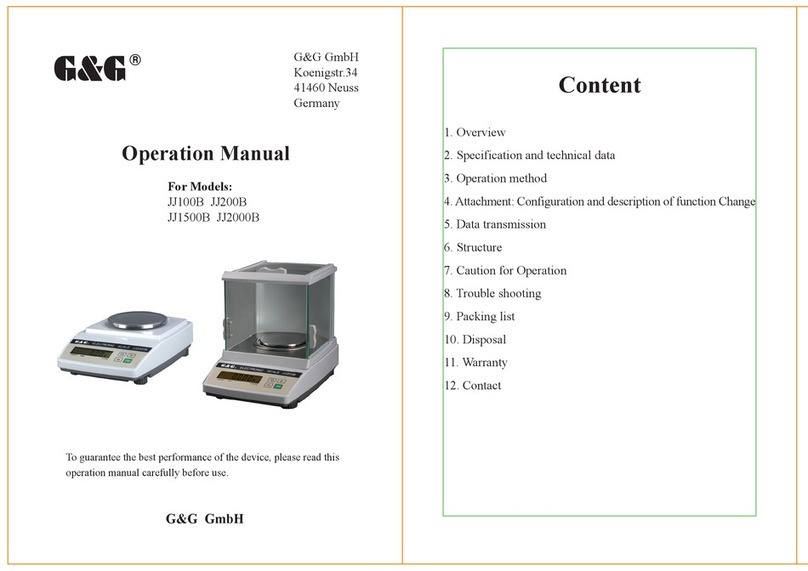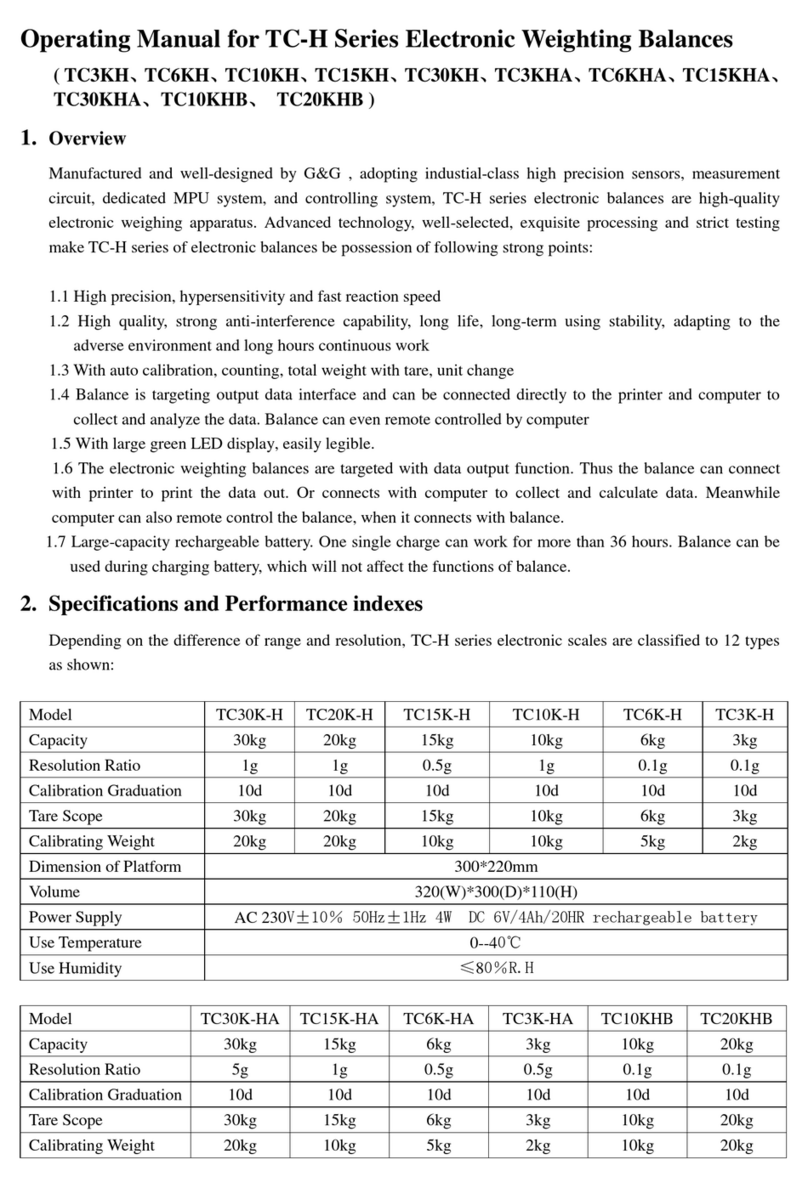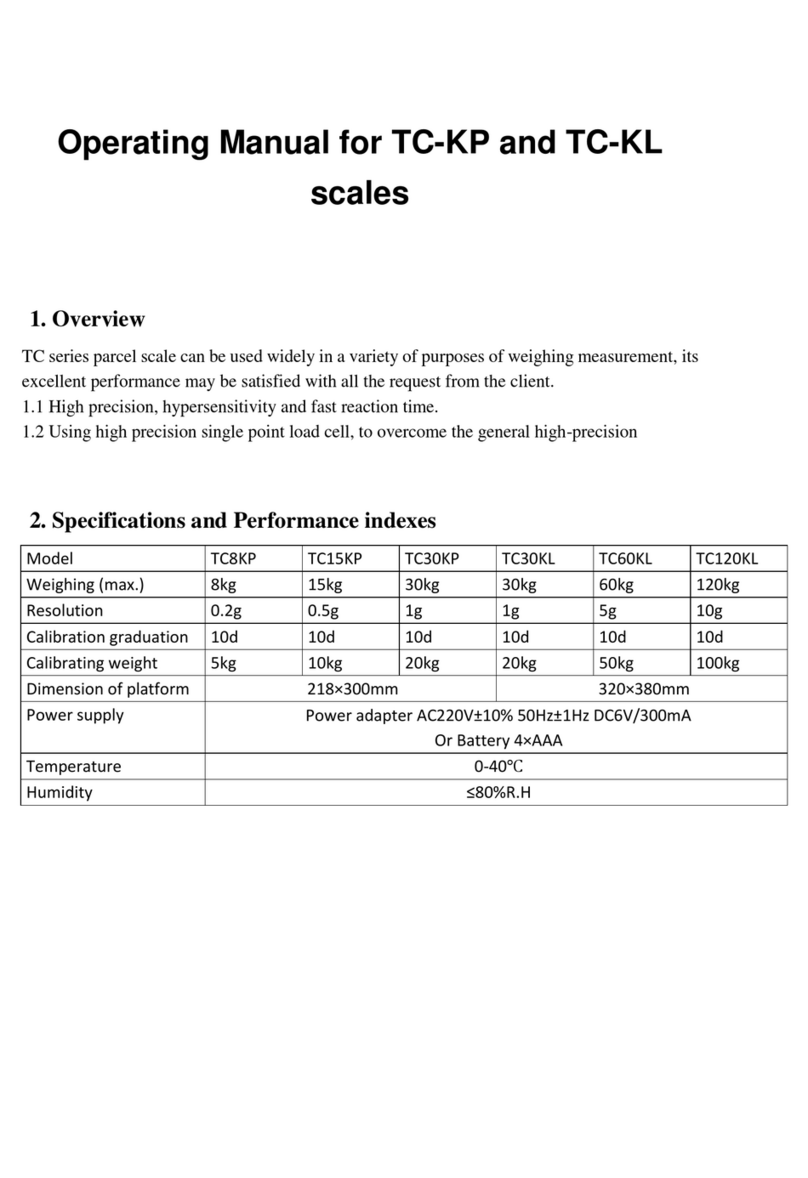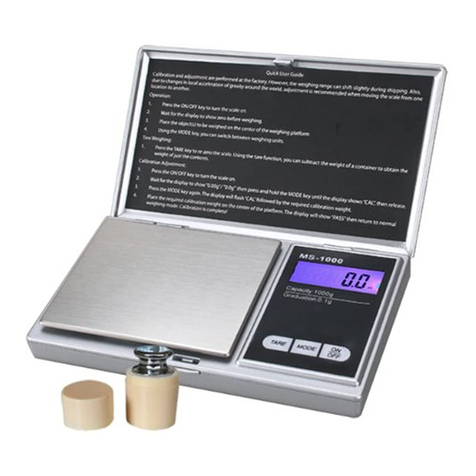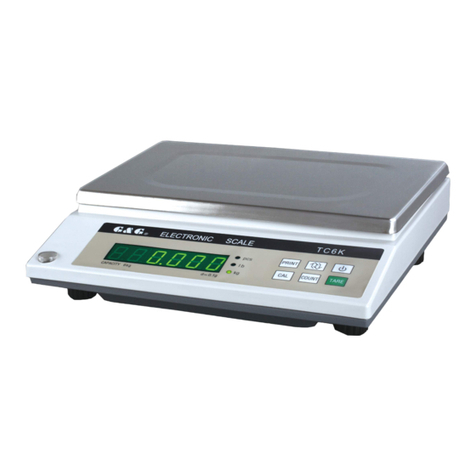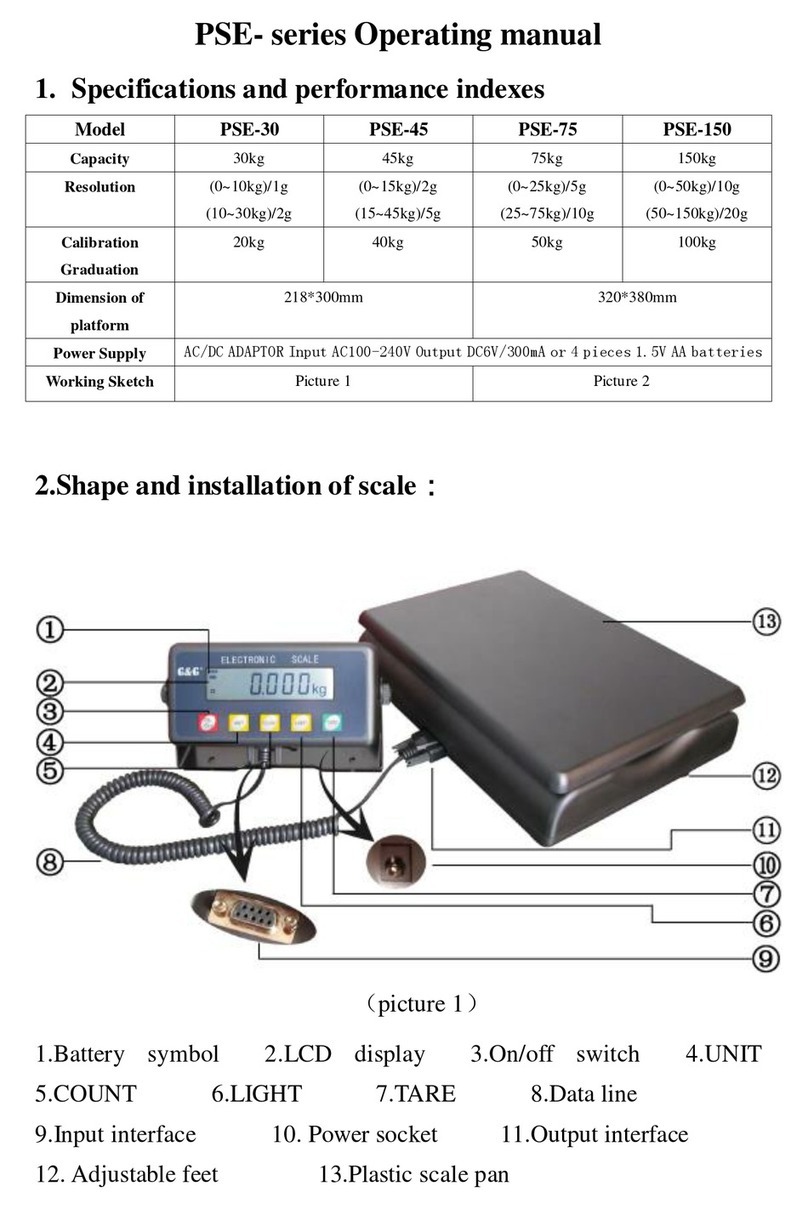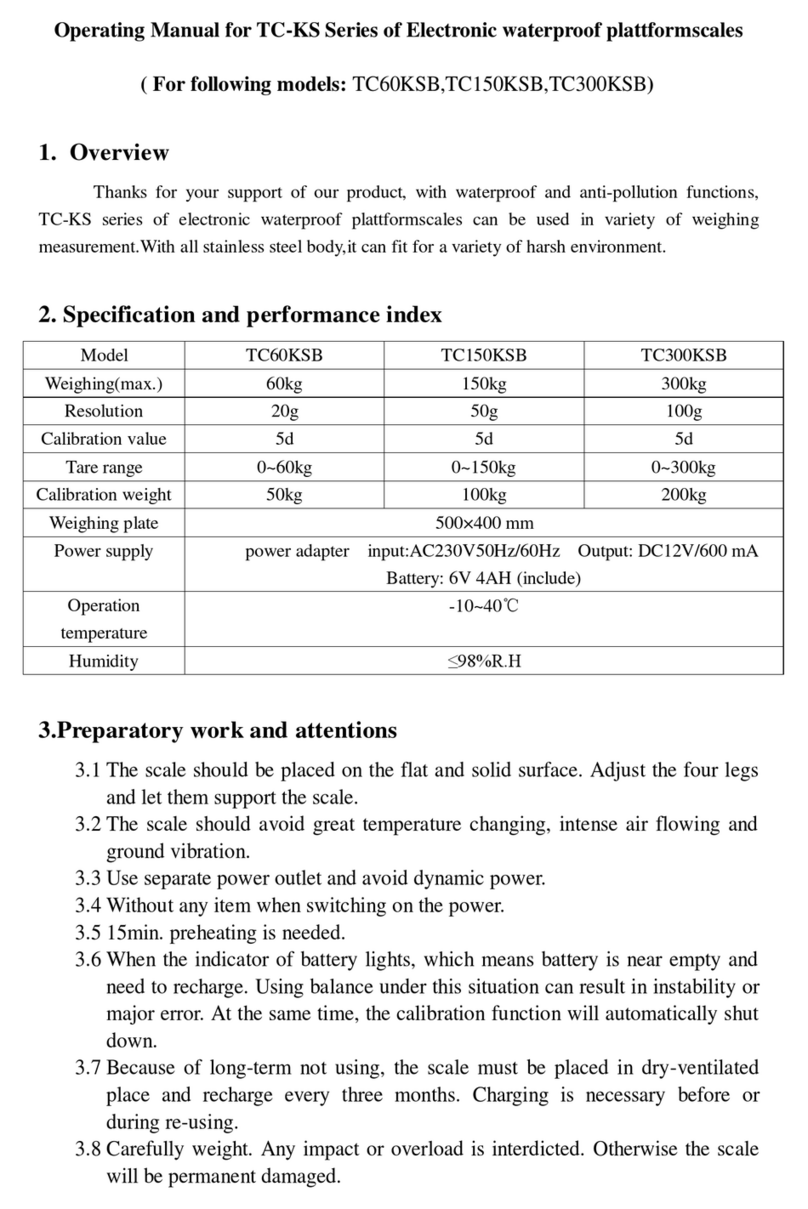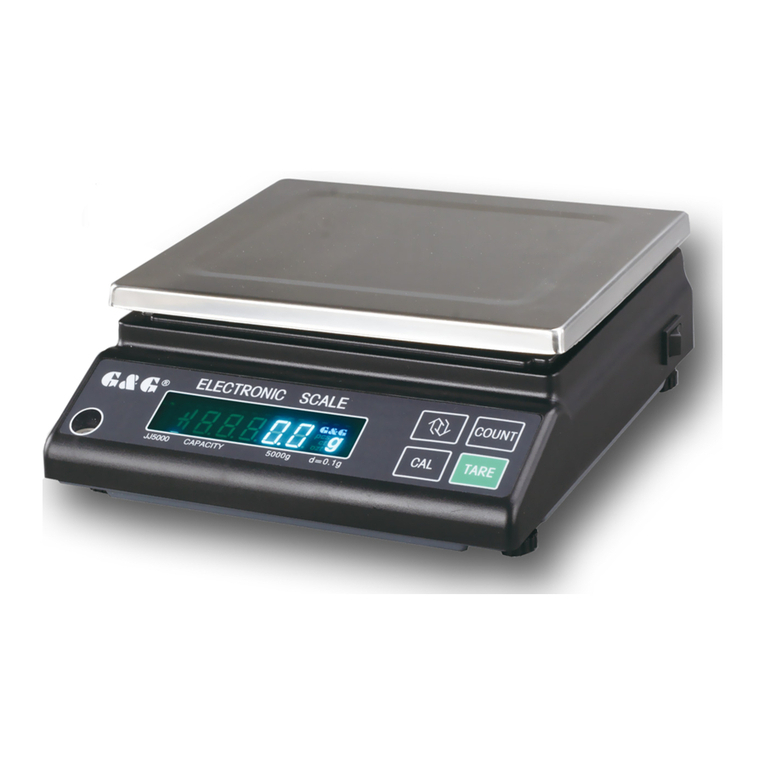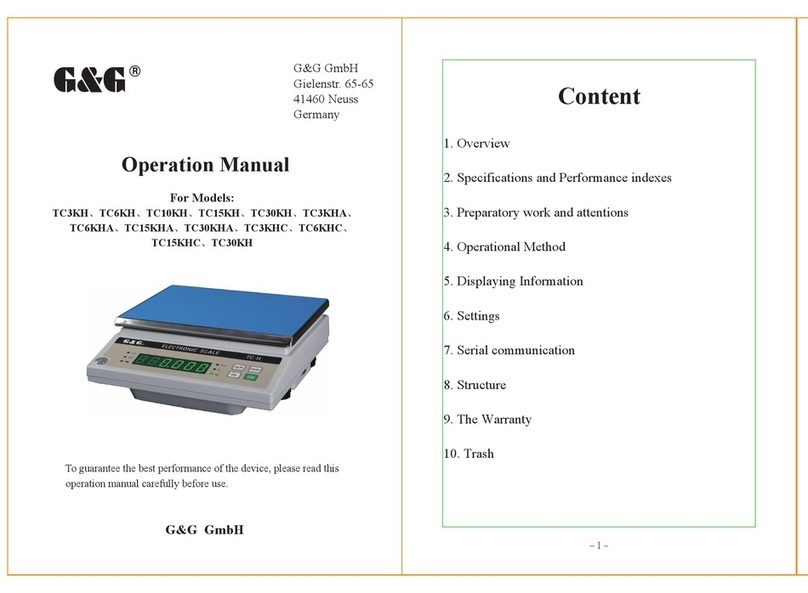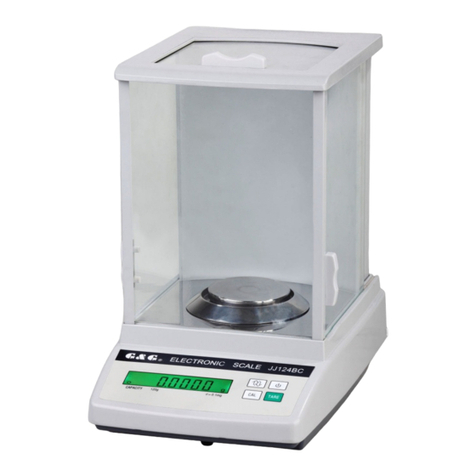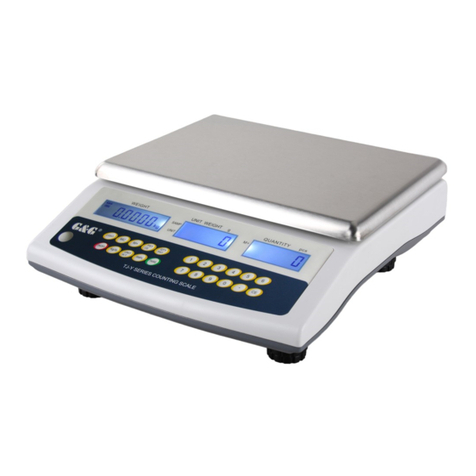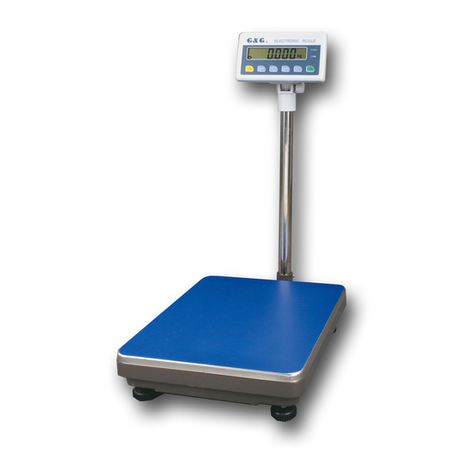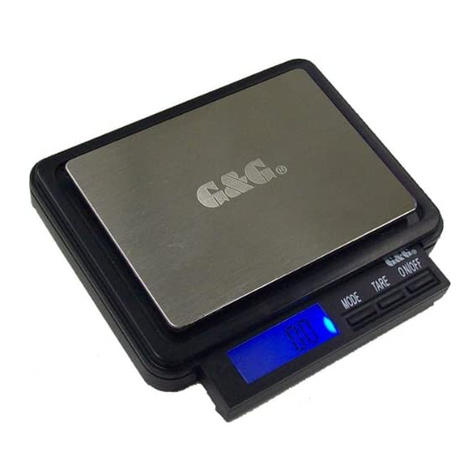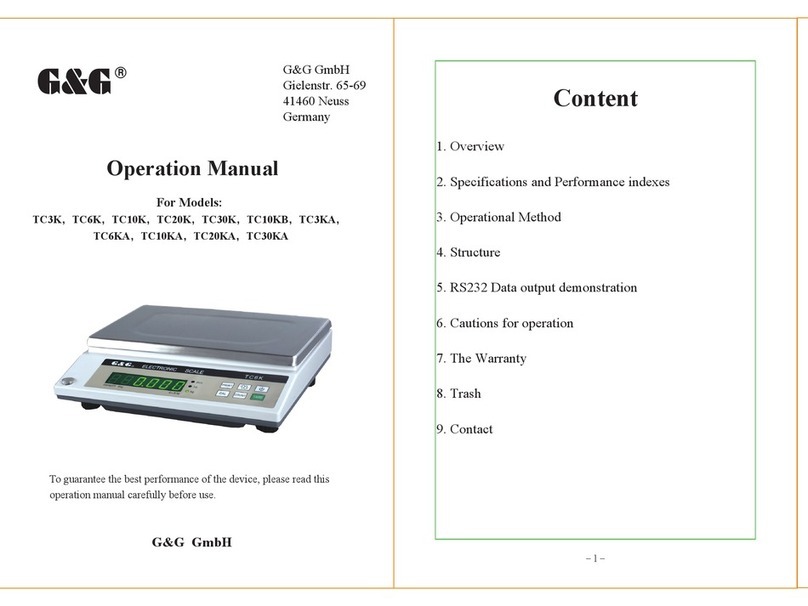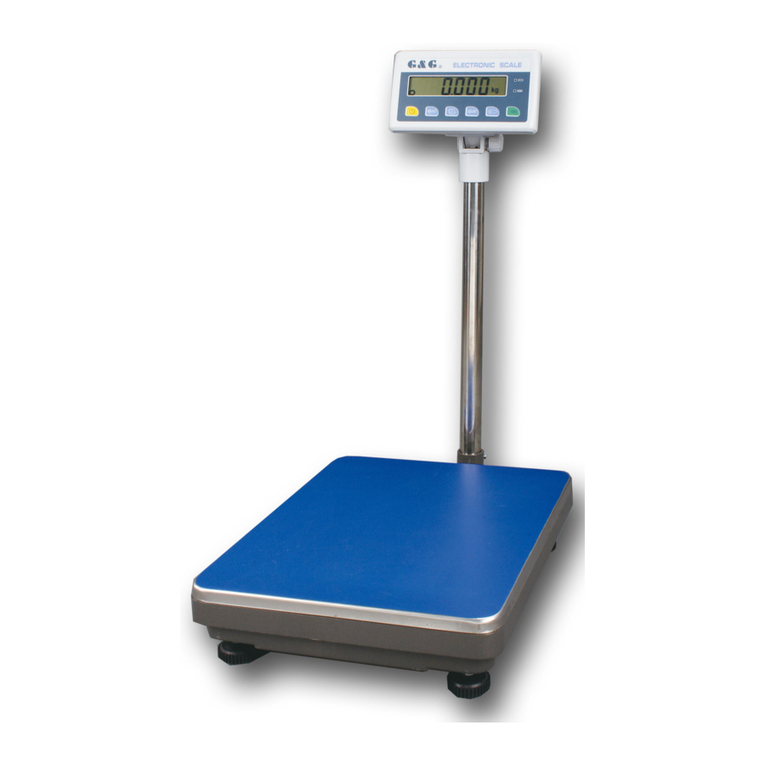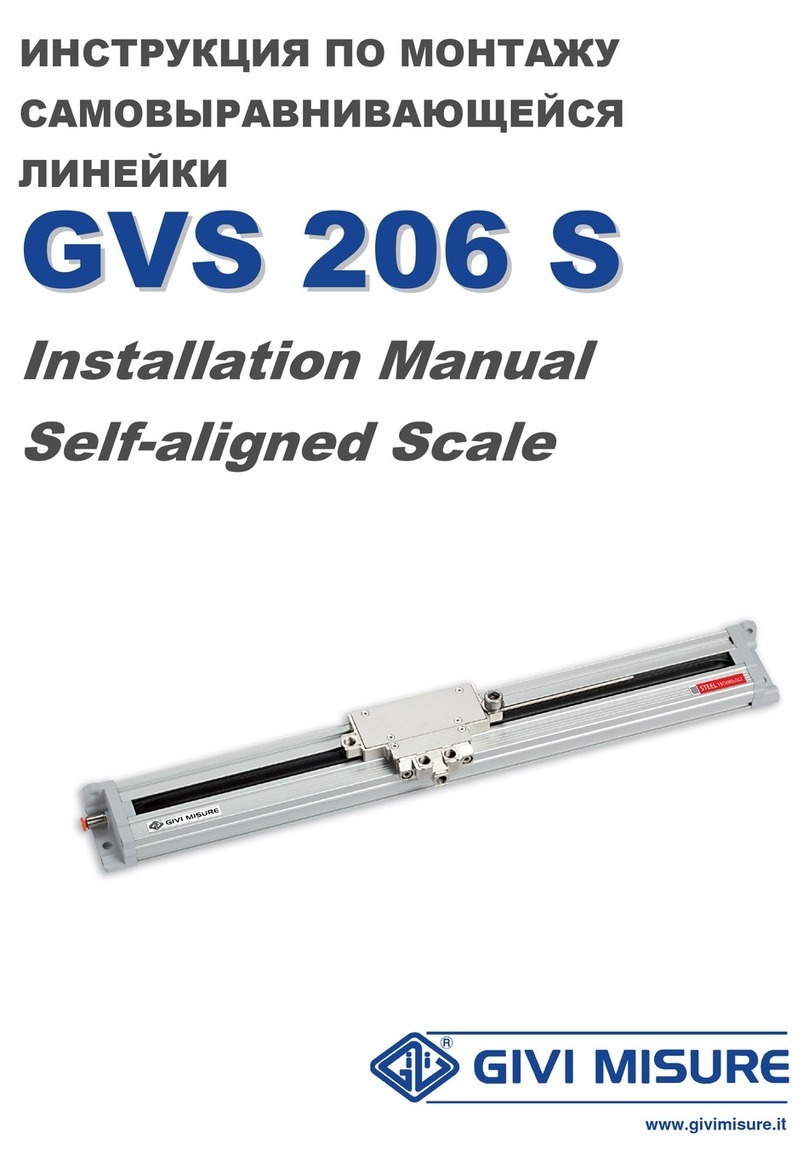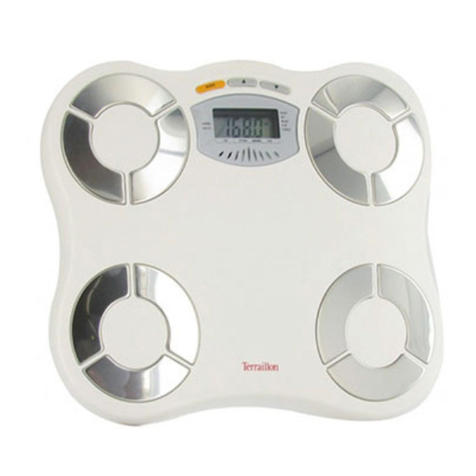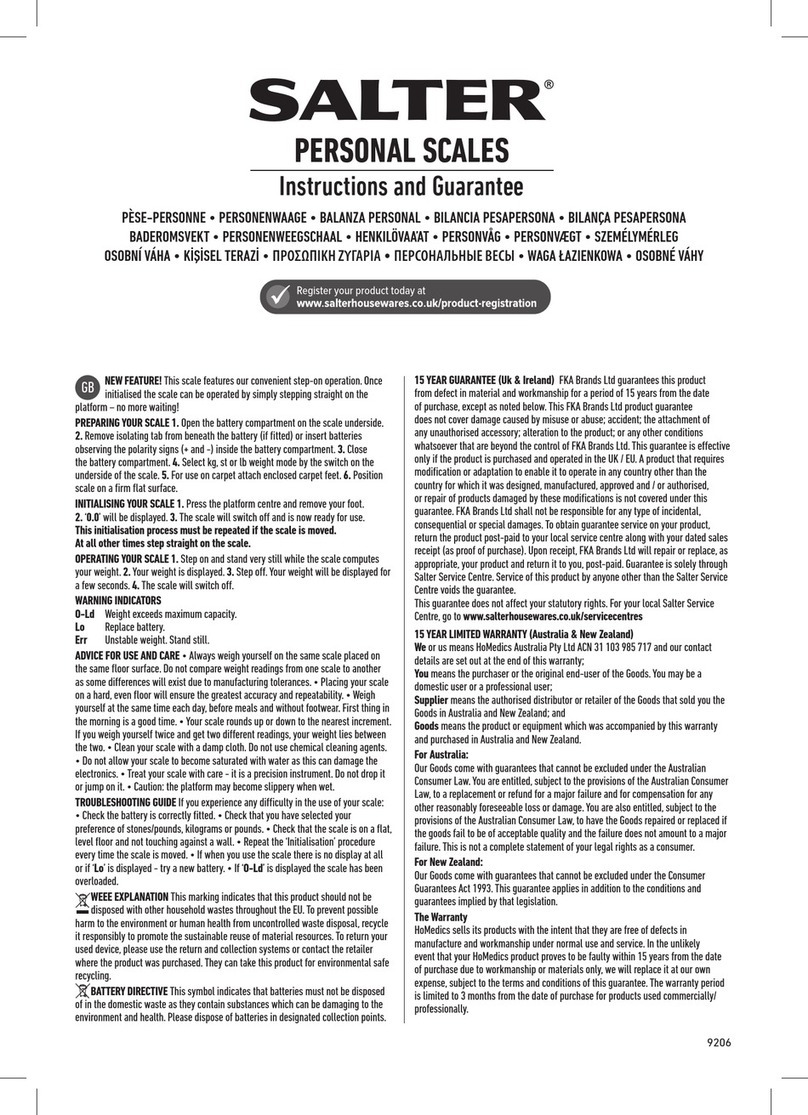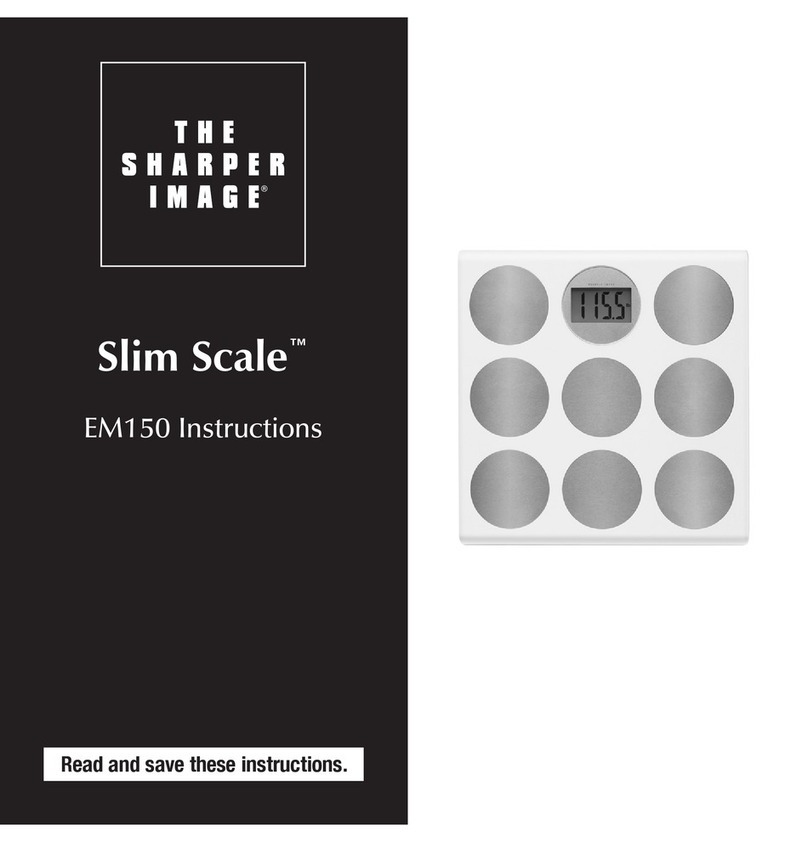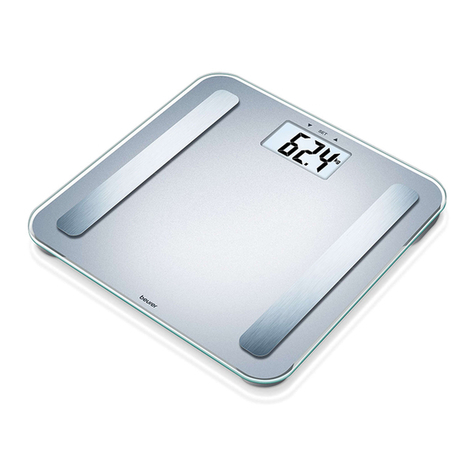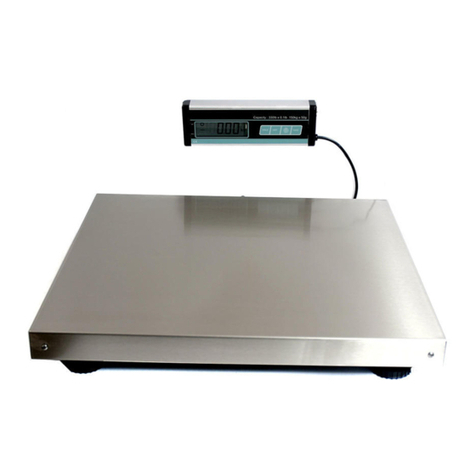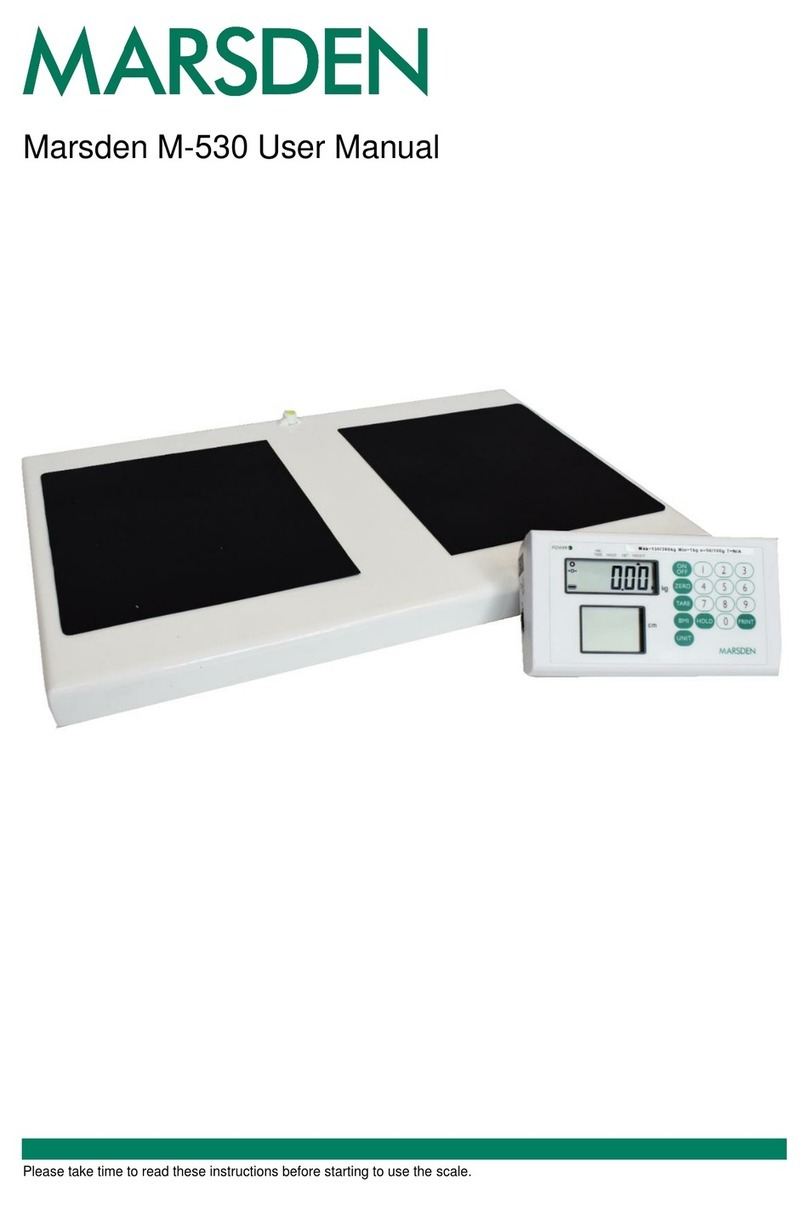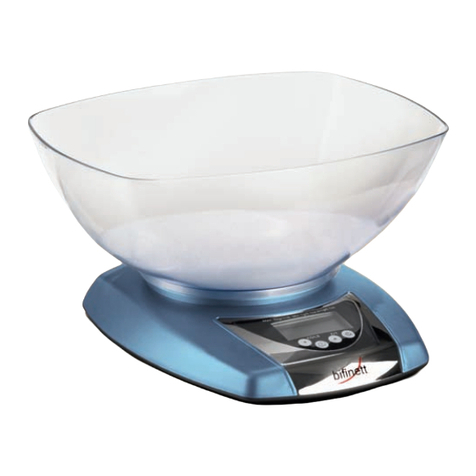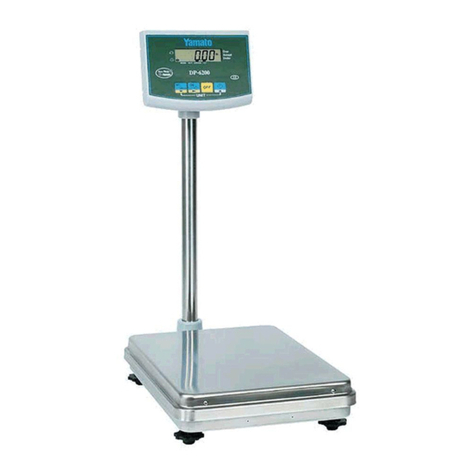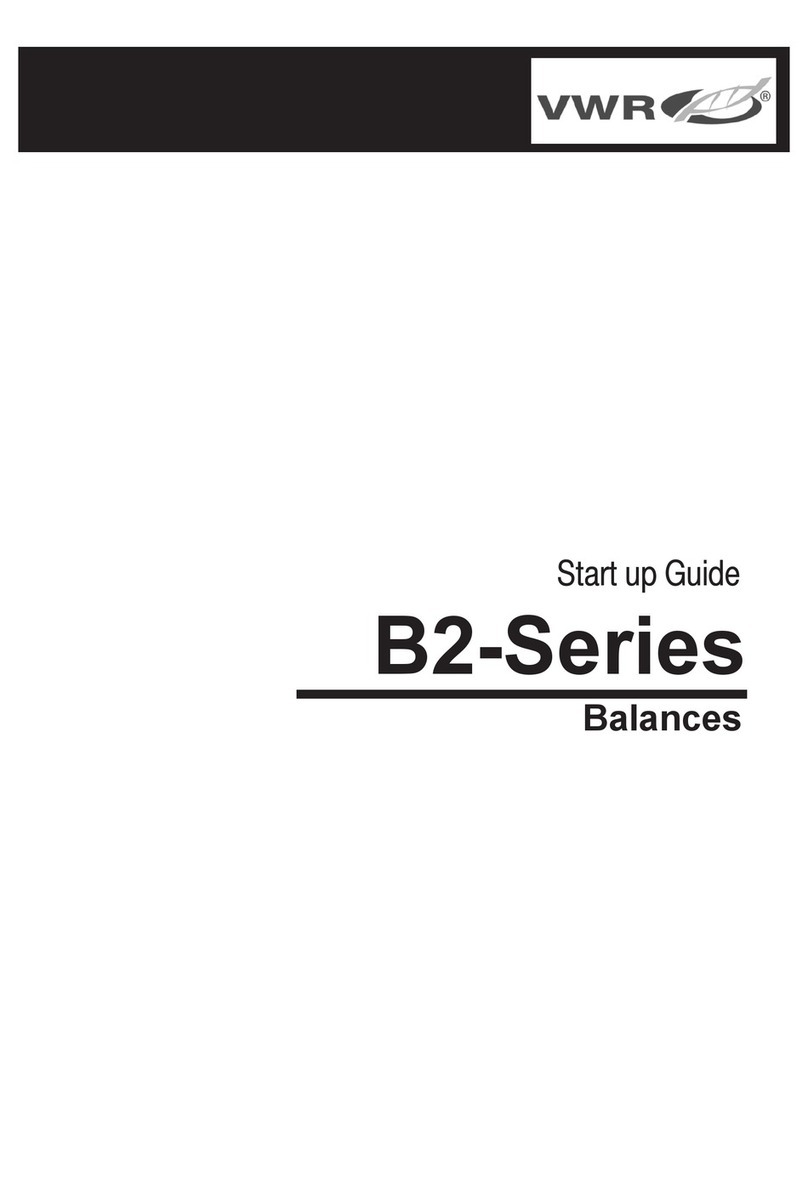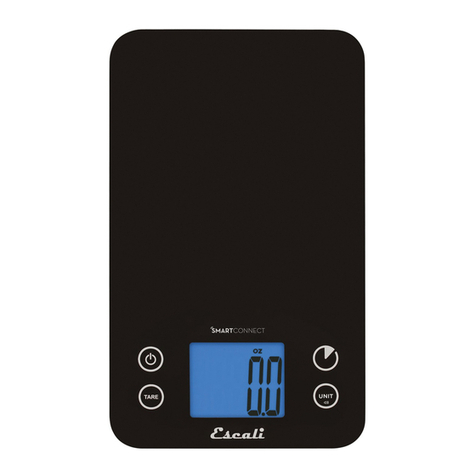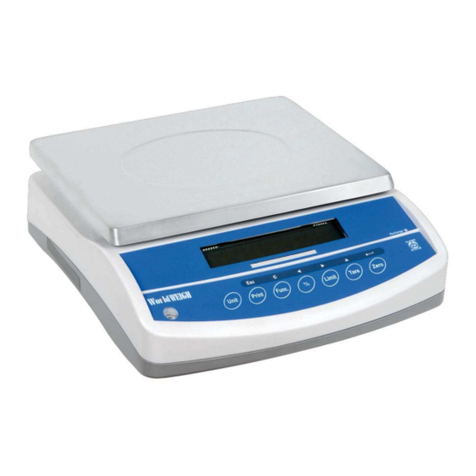G&G TJ Series Instruction Manual

Operating Instruction Manual of TJ Series Electronic Counting
Weighing Apparatus
1. Overview
TJ series electronic counting weighing apparatus is quality electronic weighing implement
carefully designed and manufactured by the G&G Measurement plant based on highly
accurate sensor, measuring circuit and special monolithic computer system from G&G,
featuring advanced technology, excellent materials, exquisite workmanship and strict testing
means, thus providing this series electronic counting weighing apparatus with the following
perfect advantages:
1. High accuracy and sensitivity with fast response.
2. Use of highly accurate strain sensor for weighing, eliminating the defect that generally,
highly accurate electromagnetic type electronic weighing apparatus can not weigh iron,
nickel and other magnetic-conductive substances.
3. Advanced mode of circuit and good materials and workmanship, hence the high
reliability of products, good resistance to interference, long service life, good stability in
long service, and adaptability to poor operating environment and continuous long-term
operation.
4. Functions of automatic calibration, automatic zero tracing, counting, accumulation, tare
and pre-tare, unit conversion, preset quantity alarm and more.
5. Use of green LED display allowing distinct display and visible readings.
6. The electronic counting weighing apparatus allows options of data output interface and
printing button, direct connection with printer for data printing and even direct interface
with computer for data acquisition and statistics while the computer controls the
operation of the electronic counting weighing apparatus via the interface and conducts
real-time remote control of the electronic weighing apparatus.
7. Rechargeable battery with large capacity which operates continuously for over 36 hours
after one charge, and allows the use of the electronic weighing apparatus during charge,
which does not affect the behavior in service of the weighing apparatus.

2. Specification and performance index
Depending on the difference of range and resolutions, G&G Brand TJ series electronic
counting weighing apparatus is classified into 4 types as shown in the table:
Models TC30K-J TC15K-J TC6K-J TC3K-J
Capacity 30kg 15kg 6kg 3kg
Resolution Ratio 1g 0.5g 0.2g 0.1g
Calibration graduation 10d 10d 10d 10d
Tare Scope 30kg 15kg 6kg 3kg
Calibrating Weight 10kg--30kg 5kg--15kg 2kg--6kg 1kg--3kg
Min. weighing 20g 10g 4g 2g
Min. sampling value 20g 10g 4g 2g
Min. unit weight value 0.5g 0.25g 0.1g 0.05g
Dimension of Platform 300×220mm
Vo l u m e 320(W)×300(D)×110(H)
Power supply AC 220V±10%50Hz±1Hz DC 6V/4Ah/20HR rechargeable battery
Operating temperature 0-40℃
Operating humidity ≤80%R.H
3. Operating method
3.1 Prior to the use of the electronic weighing apparatus that has been just
purchased or laid idle for long time, power should be switched on for battery charging
and leveling. Tune-on the power switch and the weight display window displays
“F----1” to “F----9” and then “0” after holding for a period of time. Prior to the use,
switch on the power for 15 minutes of warming-up.
3.2 Tare and pre-tare
3.2.1 If the weight display deviates from the zero with nothing on the weighing
platform, press the “TARE” key to reset the weight display to zero.
3.2.2 If the weight of the article for which the packaging is to be removed is
unknown, place the packaging container on the weighing platform, wait till the weight
display is stable before pressing the “TARE” key. The zero is displayed for the weight.
Then place the article to be weighed in the container. Now, the weight window displays
the net weight of the article. When the article and its container are removed, the weight
display window displays the negative value of the weight of the container. Nevertheless,
press the “TARE” key so that zero is displayed for the weight.
3.2.3 If the weight of the article for which the packaging is to be removed is known
(pre-tare), key-in the weight (in g) of the container by means of number keys, then press
the “TARE” key and the weight display window displays the net weight of the article
excluding the weight of the container. Remove the article and container, the display
window displays the negative value of the weight of the container. Nevertheless, press
the “TARE” key and the Packaging Removal function is canceled and zero is displayed
for the weight.
3.3 Calibration
When laid idle for long time or just purchased, the electronic weighing apparatus should
be subject to calibration. With nothing on the weighing platform, fully warm up the
electronic weighing apparatus (for 15 minutes or more) ,press and hold the “CE” key
followed by pressing the “UNIT W.T.” key and the weight display window displays

“XXXXXX”. The unit weight display window displays “-CAL-” and it is in the
calibration state (XXXXXX refers to the weight of the calibration required. For instance,
“10.000” means that standard weight of 10kg is desired.). Now, simply place the
calibration weight on the weighing platform, wait till stability is achieved and the
weight display window of the electronic counting weighing apparatus displays the value
of the weight. The indicator for the sign “kg” of stable weight lights, the unit weight
display window displays “0” and thus ends the calibration. Now, normal weighing and
counting is possible. Or when the unit weight display window displays “-CAL-”, use the
number keys to enter the weight value before calibration by placing sufficient counter
poise (the entered value of the weight should be between 1/3 of the range and full range).
In the calibration state, press the “TARE” key and you will come out of the calibration
state. When the weight display window displays “C----F” during the calibration, it
means that the zero is unstable. You may press the “TARE” key for the weight display
to reset before the calibration.
3.4 Counting
3.4.1 When the unit weight of the article to be weighed is unknown, place the article to be
sampled on the weighing platform, key-in the quantity of the article to be sampled, press the
“SMPL” key and the unit weight display window displays the unit weight of the article to be
sampled, the quantity display window displays the quantity of the article to be sampled, thus
ends the sampling and it is in the counting state. The larger the quantity of the article to be
sampled, the more accurate the calculated unit weight value is.
3.4.2 When the unit weight of the article to be weighed is known, key-in the unit weight
value of the article to be weighed, then press the “UNIT W.T.” key, (If no key is pressed for
entering after 5s when numbers are keyed in, the entered number in the unit weight window is
deemed as the unit weight value of the article to be weighed.) and thus ends the setting and it
is in the counting state.
3.5 Weight Accumulation
Press the “M+” key to enter the accumulation state and the accumulation indicator lights. The
max. number of operations for accumulation is 99 and the max. number to be displayed in the
quantity display window is 99999. When weight data display is stable in the weight display
window, press the “M+” key and the weight display window displays the total weight with the
unit weight window displaying the accumulated number of operations and the quantity
display window displaying the total weight. After about 5s, you are again in the counting state
where the weight display window displays the current weight, the unit weight window
displays the unit weight and the quantity display window displays the current quantity. When
the weight display window displays zero, press the “M+” key and you will view again the
accumulated value. Press the “MC” key and you can clear the accumulated value and are out
of the accumulation state.
3.6 Presetting of quantity
For counting, the upper limit can be preset. For each of the subsequent counting, alarm is
actuated when this limit is exceeded and “--H--” flickers in the unit weight display window.
Key-in the upper limit of number to be set, press the “QTY PST” key and thus ends the
presetting of the quantity. When you press the “QTY PST” key without data entered, the
quantity display window displays the current value of preset quantity. To clear the upper limit
of preset quantity, press the “PST CE” key
3.7 Unit conversion
Press “kg/lb” key and the displayed value for weight display window switches between “kg”
(kilogram)and “lb”(pound)and the indicator for relevant unit lights. The unit conversion

in the weight window does not affect the unit in the unit weight window (which is always in
g).
3.8 Data output
For the electronic weighing apparatus, standard RS232 data output interface may be used,
which may be directly connected to printer. When not in the number input state, press “.” key
to print counting data. Also, it may be directly connected to the computer interface.
4. Illustration of keys
0-9 Keys for entering numbers
. In the number-entering state, it is a key for decimal. When not in the number-entering state, it is
the printing key.
CE In the number-entering state, it clears the entered numbers.
When it is not in the number-entering state, press and hold the “CE” key followed by
pressing the “UNIT W.T.” key and you are in the calibration mode.
TARE In the number-entering state, press the “TARE” key, pretare the current entered value.
When it is not in the number-entering state, pressing the “TARE” key clears the current
weight.
In the calibration state, press the “TARE” key and you are out of the calibration state.
kg/lb The unit in the weight window between kg(or g) and lb.
UNIT
W.T.
In the number-entering state, press the “UNIT W.T.” key and the current entry is set as unit
weight.
SMPL In the number-entering state, press the “SMPI” key and the current entry is set as number of
pieces.
To set the number of pieces, the displayed data in the weight display window must be more
than 0. Otherwise the set number of pieces is 0.
M+ When the displayed data in the weight field is more than 0, accumulated weight value and
value for number of pieces are re-established after the unit weight window displays the
accumulated number of operations for 5s, and the next accumulation is possible only when
the weight returns to 0.
MC Allowing you to get out of the accumulation state and clear the accumulated value.
QTY
PST
In the number-entering state, press the “QTY PST” key to set the current entry as the upper
limit of the quantity.
When it is not in the number-entering state, the quantity window displays the preset quantity
and returns after 5s.
PST CE It clears the quantity preset value.

5. Information displayed on the counting weighing apparatus
5.1. The weight field displays the following information:
F----1 Data exceeds the range of display.
F----2 Error in A/D conversion circuit
F----3 Indicating that keys are available
F----5 Indicating fault in the sensor
F----L Zero of sensor signal is too low
F----H Weight exceeds the range
C----F Error in calibration. It is not at zero or the data are not stable during the calibration.
C----H Error in calibration. Article is placed on the weighing platform or the zero of the sensor
is too high during the calibration.
E----- Error in storing the calibration data. Service is possible only after re-calibration.
5.2. The unit weight field displays the following information:
-CAL- You are in the calibration state
≡X≡The displayed value is the number of operations for accumulation. The weight field
displays the total weight and the number-of-pieces field the total weight.
H Meaning the preset quantity is exceeded and an audible warning is given.
5.3. The quantity field displays the following information:
F---1 The value of the number-of-pieces exceeds the range of display
5.4. Indicators
kg(g)Lights when the data are stable. The current weight unit is in kg(g)
lb Lights when the data are stable. The current weight unit is in lb.
SAMP↑Lights when the total sampling amount is less than the min. sampling value.
Now, add the number of samples till the indicator is out. Set by re-sampling to
ensure the accuracy.
UNIT↑Lights when the average or set unit weight is less than the min. unit weight
value. Now, the counting weighing apparatus remains serviceable but error may
happen during the counting. It is recommended that counting weighing
apparatus with high distinguishability is used.
Under-voltage Lights when the voltage of the battery is insufficient along with audible alarm,
charge the battery. Otherwise, the battery operates only 1-2 hours. The counting
weighing apparatus operates normally during the charge.
Charging Lights when the counting weighing apparatus is in the charging state. It takes
about 8 hours for one charge.
Fully charged Slowly lights when the counting weighing apparatus is under charge. When the
charging lamp dies out, it indicates that it is fully charged. Now, it allows further
charging.

6. Setting of adjustable parameters
Start the unit by holding down the “QTY PST” key till it comes to “F----3” and you are in the
setting mode. Press the “QTY PST” key to change the parameters to be set and press the
“TARE” key to change the parameter value.
C1---- for setting the sensitivity at 0 1 2 3 4. The higher the value and the poorer the
sensitivity, the better the stability is. The factory setting is 2.
C2---- for setting the filtering intensity at 0 1 2 3. The higher the value and the slower the
response speed, the better the stability is. The factory setting is 1 or 0.
C3---- for setting the baud rate at 1(300)2(600) 3(1200) 4(2400) 5(4800) 6(9600) 7(19200).
The factory setting is 6.
C4---- for setting the communication number. The “Tare” key changes the low-value and the
“Unit Conversion” key changes the high-value. The data are the first data to be received
during the communication. The factory setting is 27.
Start the unit by pressing the “Tare” key and all set parameters and calibrated data return the
factory state. Before service, perform re-calibration.
7. Serial-port communication
It is in operating mode 1 where there is no calibration at the stop bit—Bit 1 of 8 data bits.
Receiving data:
Communication number + command printing 70H( ACSⅡcode p) calibration
71H(ACSⅡcode q) accumulation 72H(ACSⅡcode r) unit conversion 73H (ACSⅡcode
s)packaging removal 74H(ACSⅡcode t)
Transmitting data:
WT□□12345.6□kg↓15 bits
UW□1234.5□g↓12 bits
QT□12345□Pcs↓← 14 bits
To display accumulation:
MW□□12345.6□kg↓15 bits
MN□□□12□□□□↓ 12 bits
MQ□12345□Pcs↓← 14 bits
Example: To set C3---6 C4—27 (factory state), the communication procedure for VB is:
MSComm1.Settings = "9600,n,8,1"
MSComm1.Output = Chr(&H1B) + Chr(&H70) ’ sending the printing command
’or MSComm1.Output = Chr(27) + Chr(112)
’or MSComm1.Output =Chr(27) +"p"
Do
DoEvents
Loop Unti MSComm1.InBufferCount = 41
a = MSComm1.Input
Print a

w w w .g andg .de
G & G G m bH
G ielenstr. 65-69 Tel: 0 0 49-2131-60 9-7271
41460 Neu ss Fax: 0 0 49-2131-60 9-7273
G erm any Em ail: info@ g andg .de
This manual suits for next models
4
Table of contents
Other G&G Scale manuals
